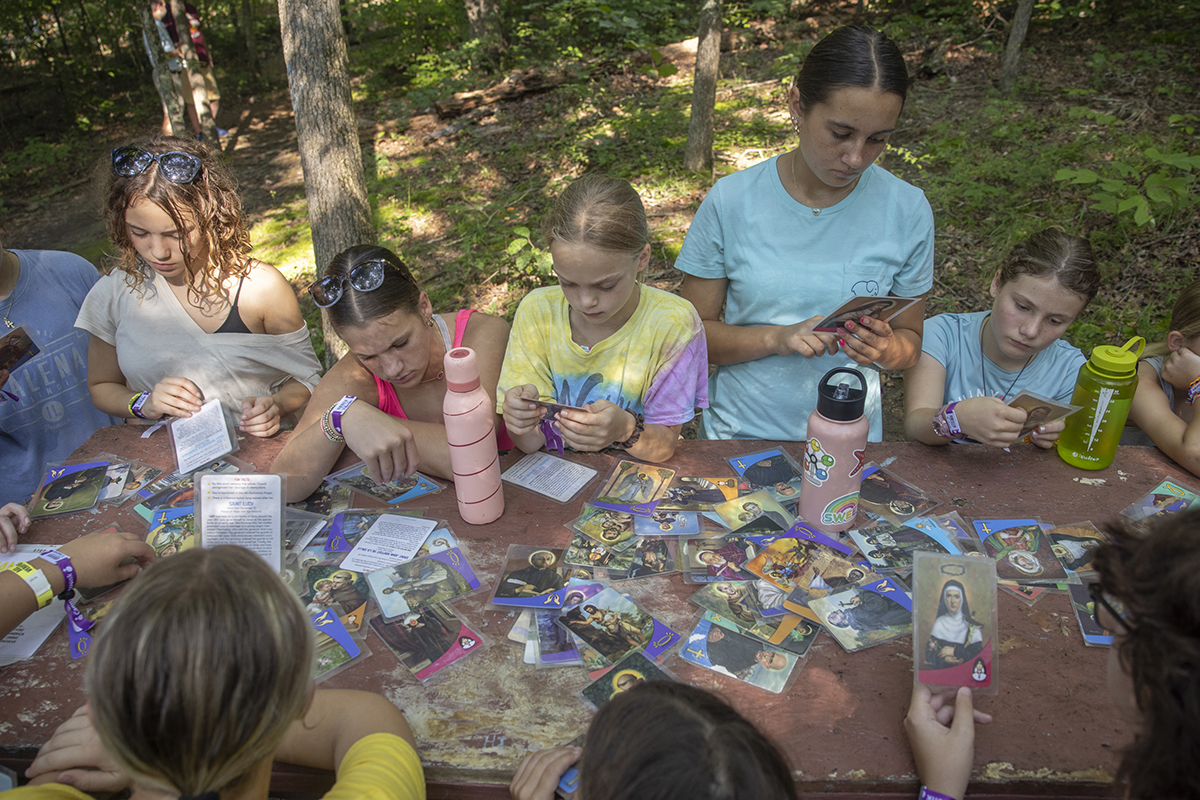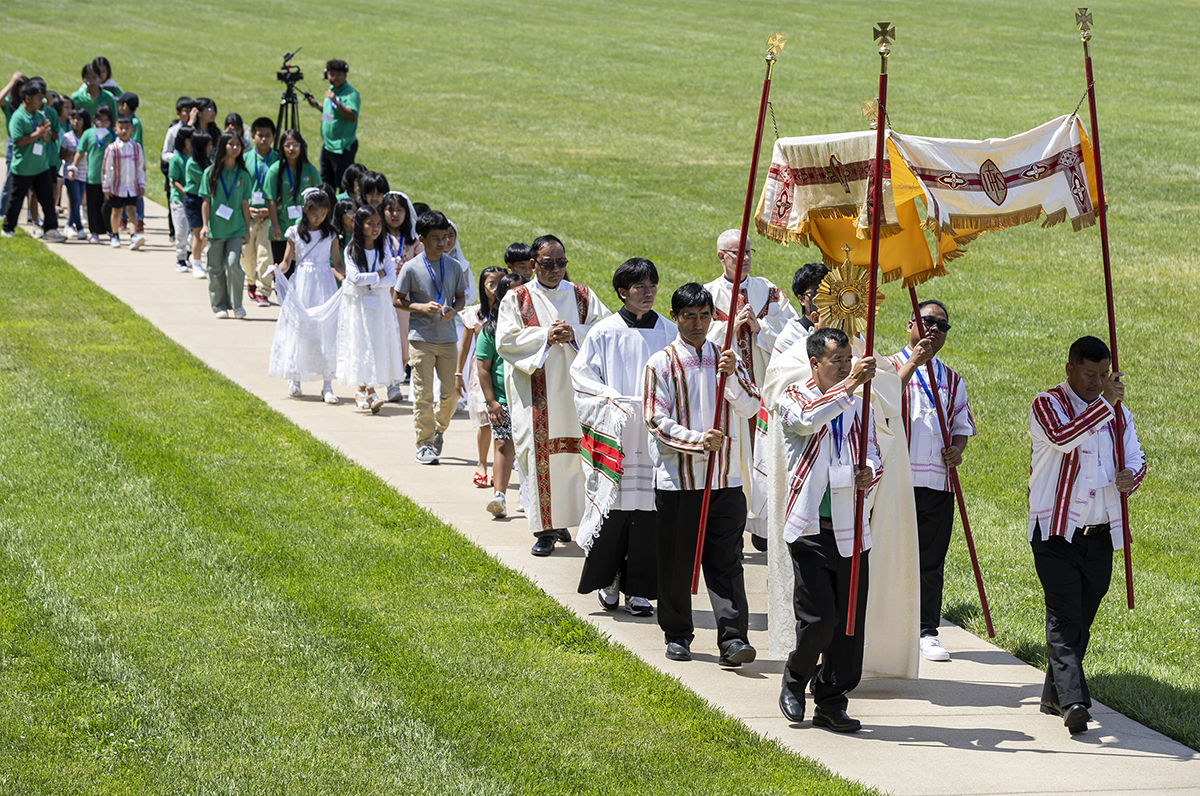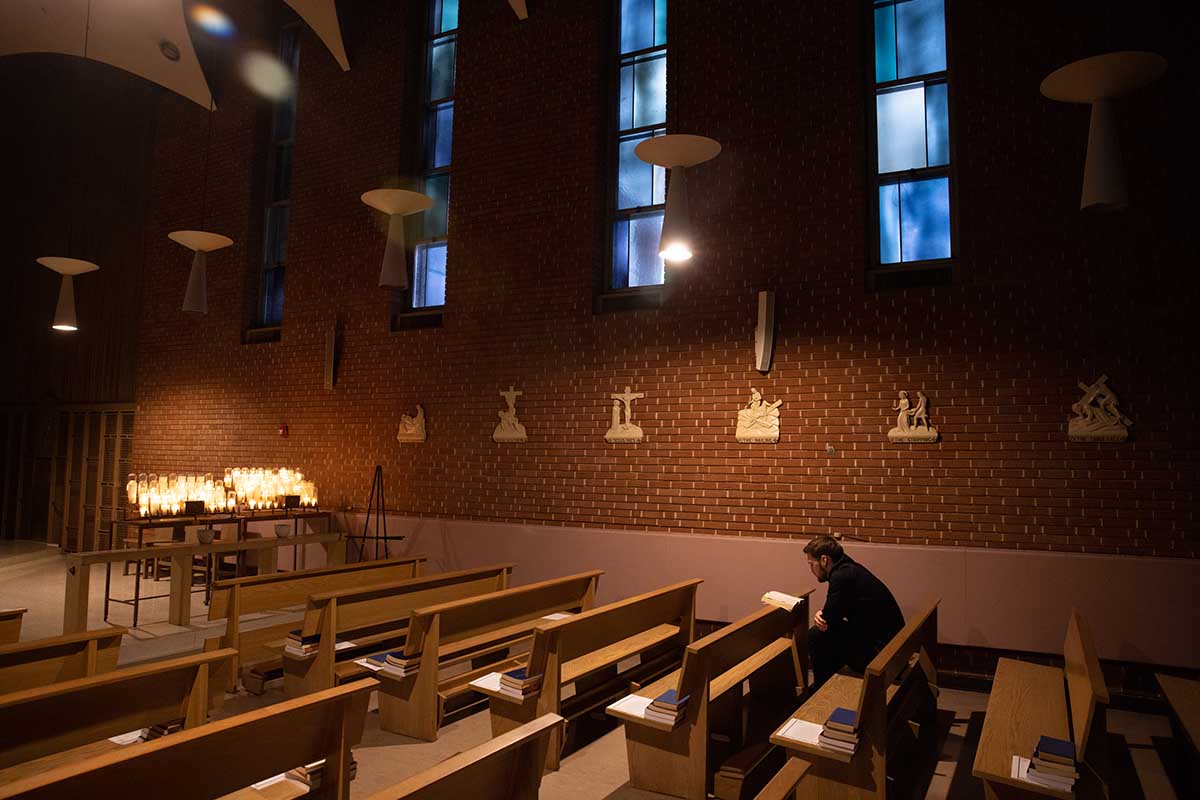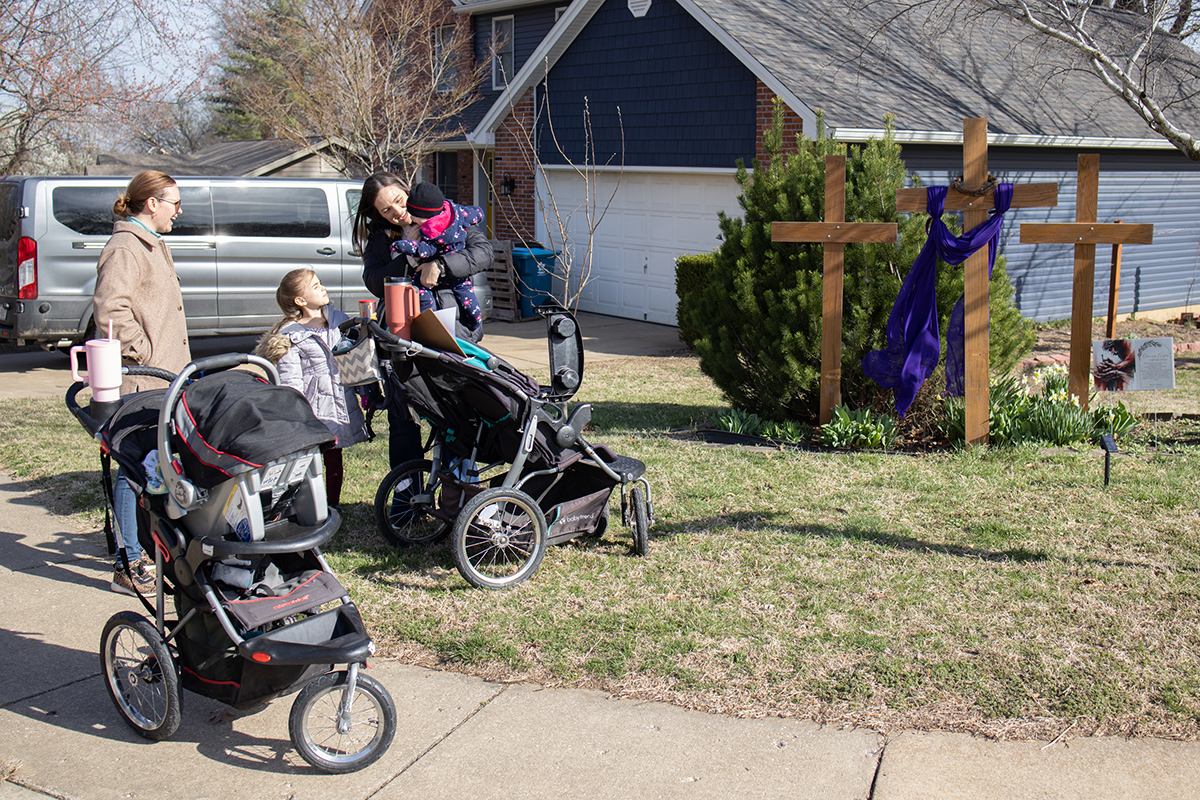Catholic community responds to St. Joseph Housing Initiative
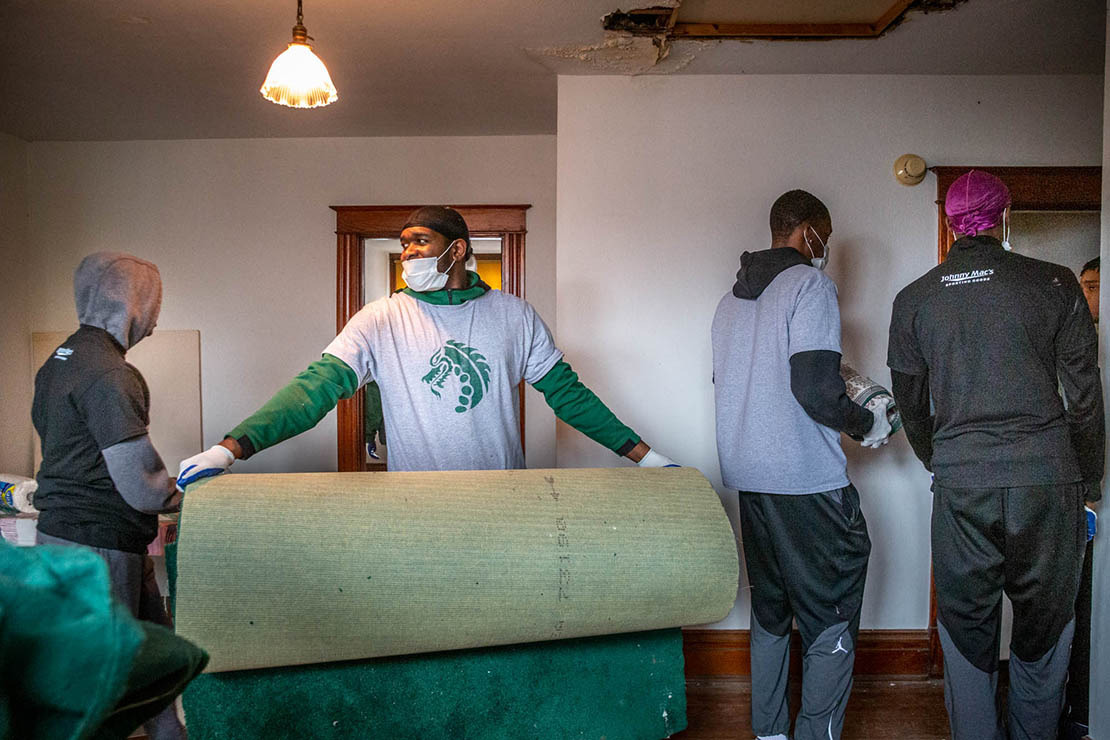
St. Joseph Housing Initiative begins rehab of first home in effort to increase homeownership and add stability in neighborhoods
Members of the St. Mary’s High School basketball team worked in unison, bouncing up and down the stairs, cleaning out three bedrooms and an attic to prepare the sturdy two-story brick home for renovations.
The players rose early, full of enthusiasm, on a Saturday morning to take part in the volunteer effort even though the previous night they played in a district championship game, beating Gateway STEM 75-58.
The effort represents just part of the response of the Catholic community in St. Louis to the St. Joseph Housing Initiative, a faith-based, nonprofit entity seeking to produce quality housing for low- and moderate-income families in the St. Louis area. Archbishop Robert J. Carlson and the Incarnate Word Foundation announced the initiative at a press conference July 25 at St. Mary’s High School — a program that grew from conversations Archbishop Carlson had with Bridget Flood, executive director of the foundation. The home near St. Mary’s is the first to be undertaken by the coalition.
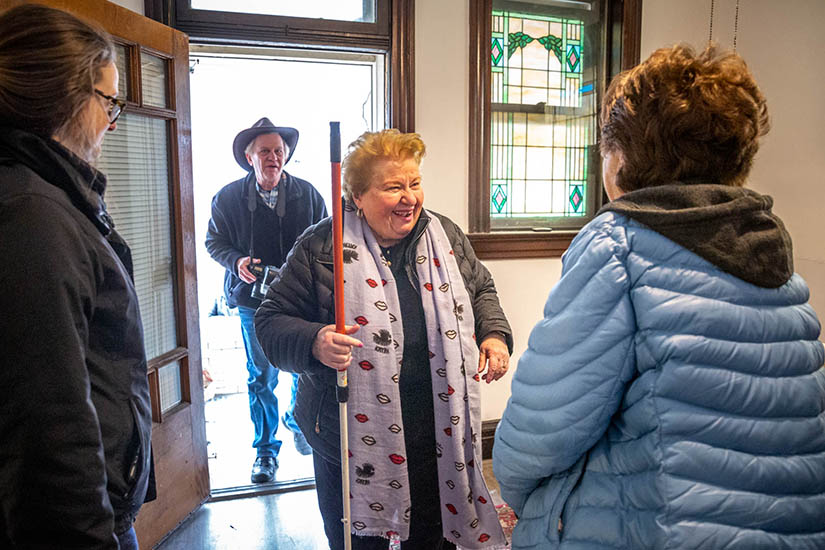
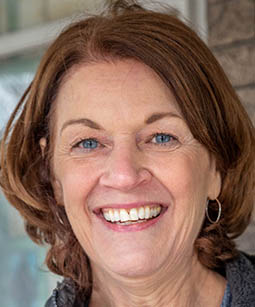
The aim is to provide increased homeownership and added stability in neighborhoods with high rates of rental housing. St. Louis City has an ownership rate of 47.7 percent compared to 72 percent in St. Louis County and 82.8 percent in St. Charles County, according to U.S. Census Bureau figures.
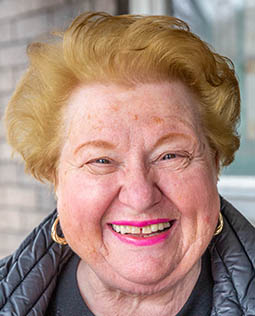
“It means a lot to come out and help,” said Yuri Collins, a St. Mary’s senior who scored 35 points in the game less than 12 hours earlier. “Anything the community
wants us to do, whenever anybody needs something for us to do, we just get up and do the job.”
It’s meaningful to help people who don’t have much, Collins remarked. “We’re happy to do it,” he said.
Mike England, president of St. Mary’s, said “our young men now are officially part of this mission.”
He talked beforehand with them about what St. Joseph’s Housing means to the neighborhood surrounding the school’s 27-acre campus and to the people who will
benefit from it. “For us, it really is important for building the future of our school that we are involved in building the future of this neighborhood,” England said. “And we believe in the potential of this neighborhood. We believe in south city.”
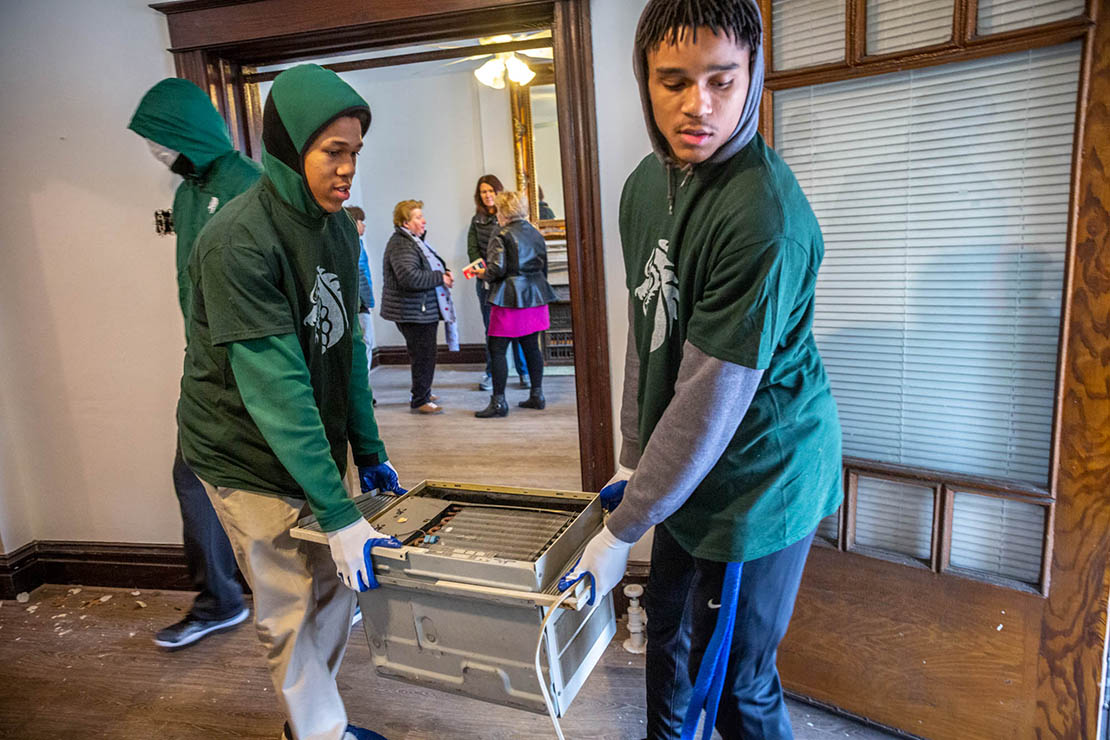
Sister Mary Ann Nestel was excited to have the help. She’s the chairman of the housing initiative board and represents the Sisters of St. Joseph, one of the supporters of the initiative. “We’re so excited to have this wonderful home to put a family into,” she said.
Giving an impromptu tour of the house, she pointed to well-maintained woodwork, doors and stained-glass windows, a detached three-car garage, a washer-and-dryer set, like-new oven and more. Pointing to the structural elements, she said, “The bones of the house are good.”
A goal is to ensure the family chosen for the home won’t have to make repairs for many years. “God’s hand is in this,” she said. “We’re really blessed, and the family will be, too.
“The board members have been phenomenal,” Sister Mary Ann noted while listing other groups that have helped, including the St. Anthony of Padua Parish food pantry operated by its Society of St. Vincent de Paul Conference.
Maureen McCuen, executive director of the initiative, said the renovations will include a new roof, a second bathroom, electrical and plumbing updates, tuckpointing and “making sure all the major components of the house are solid.”
Homeowners will attend a homebuyer education class and will be partnered with a mentor family in the neighborhood. “Our goal isn’t just to put somebody in a house,” McCuen said. We want them
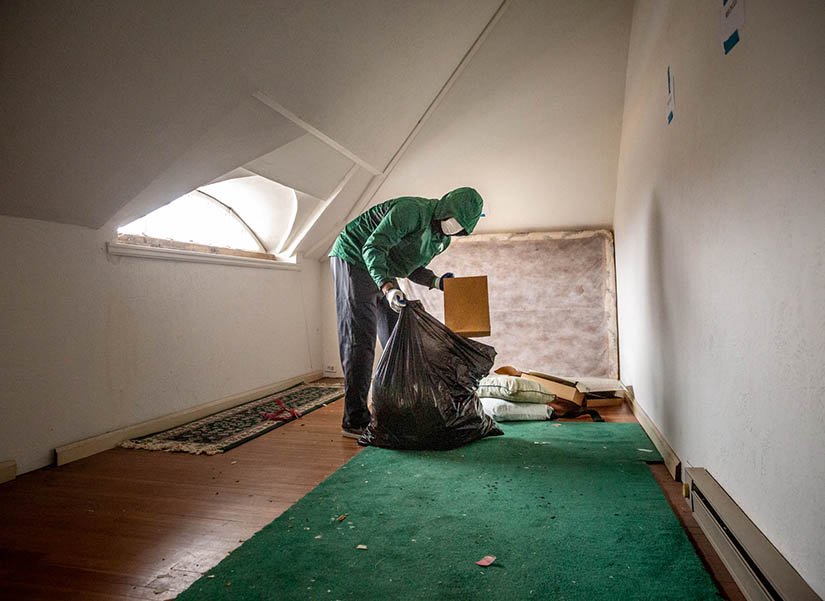
to be successful homeowners and part of the community as well.”
Flood, of the Incarnate Word Foundation, said earlier that St. Joseph Housing is a response to provide low- and moderate-income families with the opportunity to become homeowners, become part of a neighborhood community and build wealth.
“Archbishop Carlson took a leadership role by initiating St. Joseph Housing in order to provide home ownership opportunities for families who are typically paying more in rent for substandard housing than for a mortgage,” she said.
Initially, the St. Joseph Housing Initiative will rehabilitate houses around the diverse Carondelet and Dutchtown neighborhoods of south St. Louis.
At the press conference announcing the initiative, Archbishop Carlson recalled his parents saying that “perhaps the best investment is in a home. … It’s a place where they can experience love and develop to their full potential.”
Others helping with preparing the home for renovation include Saint Louis University’s Transitional Workforce Academy. Fontbonne University students, faculty and staff will take part in a neighborhood clean-up April 12.
Henry Schaper stopped by the house and greeted members of the basketball team. The parishioner of St. Francis of Assisi in Oakville was one of eight Schaper children who lived in the house at one time with their parents. His great-aunt had lived there previously, Schaper explained. His mom moved to a nursing home and sold the house to his brother, who died in September.
Around that time, Schaper saw correspondence from St. Mary’s that mentioned that the school was part of the housing initiative and was providing office space for it. The family decided to sell to the initiative, a move that shows their pride in their south St. Louis roots, he said.
Also visiting was a neighbor, Jack Corey. “Homeownership, having good neighbors, is important to everyone,” said Corey, a St. Mary’s grad and member of St. Anthony of Padua Parish. “This is reassuring.”
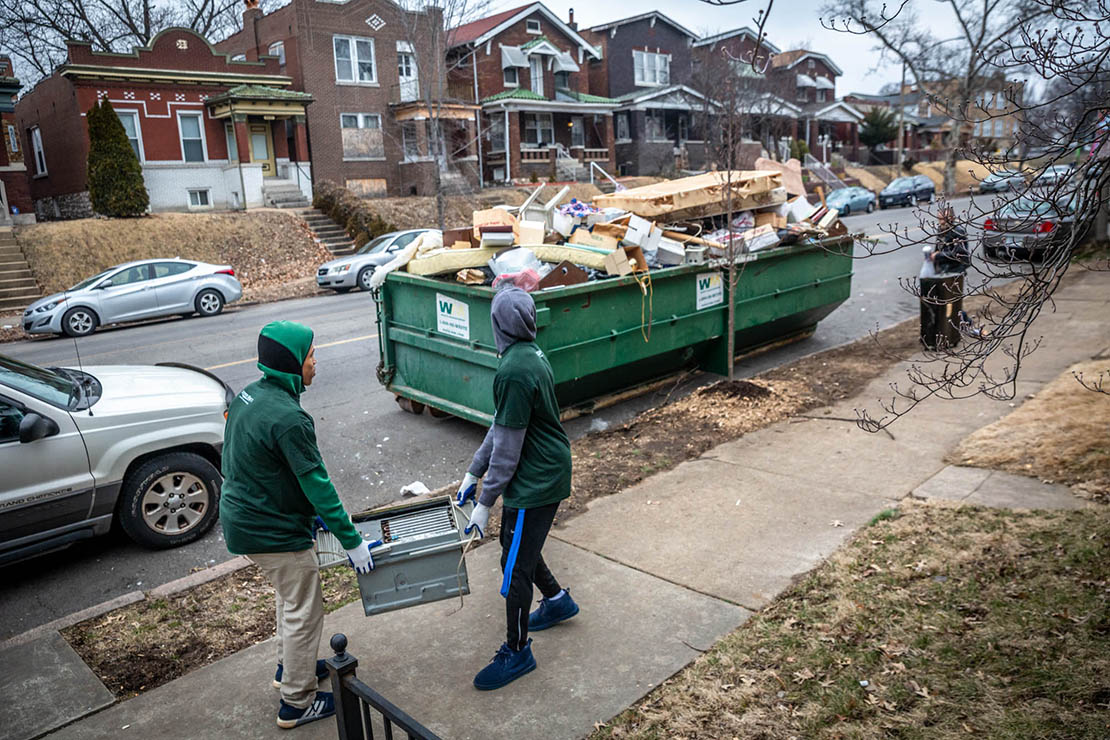
The need
The Dutchtown neighborhood is the largest in the city, with a population of 17,000, according to the U.S. Census Bureau. Only 32 percent of houses are owner-occupied homes, below the average in St. Louis City of 43 percent and 67 percent statewide. The number of renter-occupied homes is 86 percent higher than the national average, according to the Census Bureau.
In St. Louis City, 32 percent of black residents own their homes compared to 56 percent of white residents, according to a 2015 study cited by “Forward Through Ferguson: A Path Toward Racial Equity,” a report from regional leaders who formed the Ferguson Commission to study racial strife and inequity. The report was a motive for the initiative.
A recently released report, “Segregation in St. Louis: Dismantling the Divide,” shows that St. Louis ranks 42nd out of 50 large metro areas for the probability of a child born in poverty to reach the top income distribution.
Supporters
The St. Joseph Housing Initiative, which is a separate charitable organization, has support from:
• The Incarnate Word Foundation
• Sisters of St. Joseph of Carondelet
• Five Catholic parishes — St. Cecilia, Resurrection, St. John the Baptist, St. Anthony of Padua and St. Stephen Protomartyr
• St. Mary’s High School, which among other things is donating office space
• The Archdiocese of St. Louis
• Light a Single Candle Foundation
For information, email stjosephhousingstl@gmail.com.
Members of the St. Mary’s High School basketball team worked in unison, bouncing up and down the stairs, cleaning out three bedrooms and an attic to prepare the sturdy two-story … Catholic community responds to St. Joseph Housing Initiative
Subscribe to Read All St. Louis Review Stories
All readers receive 5 stories to read free per month. After that, readers will need to be logged in.
If you are currently receive the St. Louis Review at your home or office, please send your name and address (and subscriber id if you know it) to subscriptions@stlouisreview.com to get your login information.
If you are not currently a subscriber to the St. Louis Review, please contact subscriptions@stlouisreview.com for information on how to subscribe.




